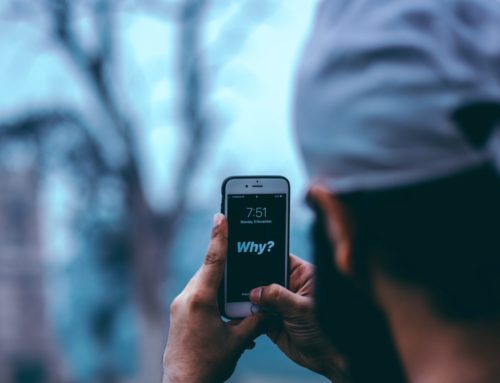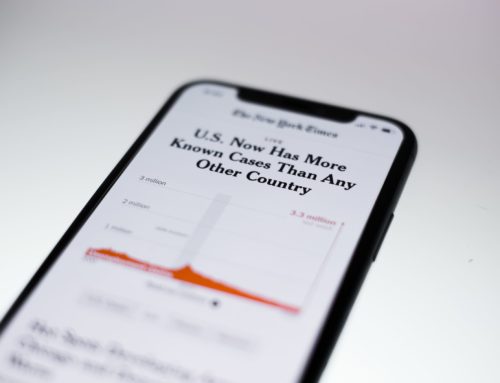T-I-Ps for Work with IEPs
Dale Boam, CI, Attorney at Law
Years ago in my role as an attorney, a school district hired me to observe and evaluate its mainstreaming services for students who are Deaf…
(I can tell this story because I produced a public document). The district was huge, covering an urban center and extending into rural communities. It had a well-developed Deaf education program (two schools for the Deaf had closed leaving a void. The district absorbed most of the larger of the two schools, but then displaced students outside the boundaries had clamored for access and Deaf students simply poured in). There were Deaf education classrooms in two elementary schools, a middle school, and a high school. Interpreters worked in these schools and others throughout the district.
I requested interviews with a random sample of interpreters. The district seemed hesitant. I assured them that I knew the CPC and would not ask questions that would cause interpreters grief. They were… dubious, but the simple fact was that they had invited me.
I conducted ten interviews, about half of the district’s full-time and part-time interpreters. Some had less than two years of experience, a couple had well over twenty years and the others were a mix. They worked through the spectrum of educational settings: urban, rural, several students, one student, two or more interpreters at the same school, and “out there all alone.”
My first question was, “What laws are most applicable to your work?”
I got a few blank looks, but most mumbled, “Um, the ADA?”
One of the experienced interpreters said, “It’s, like, PL 92-124.”
At the time, legal theory was that the ADA didn’t apply within the four walls of a public school (that has changed – so recently that the citation doesn’t have a page number! Fry v. Napoleon Community Schools, 580 U.S. ___ (2017) – the case features Wonder the Goldendoodle and if that doesn’t make you curious, you have no imagination!)
The interpreter who said PL 92-124 almost got it. PL 94-142 is the Education for All Handicapped Children Act. PL 94-142 was passed in 1975, but for many years prior to my interviews it was known as IDEA, the Individuals with Disabilities Education Act.
None of the interviewed interpreters came up with Section 504 of the Rehabilitation Act of 1973.
Because none of them knew the laws that govern their work, my next question was a forgone conclusion, “Have you read your student’s IEP?”
“No,” from all of them.
“Why not?”
Each said that federal law forbade it. When I asked the Special Education Administrators if interpreters read the IEPs they were SHOCKED at the idea, because IEPs are federally protected.
Next, I asked the interpreters if they attended their student’s IEP meetings. Two did, to interpret for the student’s Deaf parents. The rest said their students had hearing parents so, no need for them to attend.
Interviews completed.
Next, I knew a parent with a high school student in the district who gave me written permission to read the student’s IEP (for this article I asked permission from the former student, who now has his own children). You would have thought I had asked the administration for nuclear codes.
I read the IEP and observed the student and his very nervous interpreter (she almost a stroke whenever I made a note) for a full Block Schedule – two days.
I compiled my report and presented it to the district:
The interpreters I interviewed and observed, both formally and informally, appeared fully competent, however, they lacked certain supports required for their job:
- The interpreters were unaware of the obligations under federal laws governing their work, a direct and proximate result of the Special Education Department being equally unaware;
- Both parties’ ignorance resulted in patterns of non-compliance with stated goals of the IEP (many of which had, less than a month prior, been marked as “successful”). For example, the IEP states, “student will raise his hand and ask the teacher for clarification, when needed, at least 80 percent of the time.” During my observation the student indicated to the interpreter that he did not understand on 37 occasions. On each occasion the interpreter rephrased her interpretation. In the same period of time, the student raised his hand only twice, once to ask to use the bathroom and once to ask who I was;
- Extrapolating from the general misunderstanding that interpreters are forbidden to read the IEP, such patterns had likely repeated, and IEPs were incorrectly documented district-wide;
- If interpreters were aware of IEP goals, they were not considered members of the IEP Teams. District data indicates interpreters generally have more contact hours with Deaf students than any other staff member. Often an interpreter is the only person in the building with the communication ability to accurately observe if a student is meeting IEP goals.
Educational interpreters don’t have to be attorneys or memorize the IDEA and Section 504. But they do need to know these laws well enough to advocate for their role and by so doing, improve and sustain educational standards for the students they serve. There is almost no aspect of a Deaf student’s school day untouched by these laws because special education is more regulated than regular education.
As I’ve said before…
Know the pool in which you swim.
Dale Boam, CI, Attorney at Law is an Associate Professor of Deaf Studies at Utah Valley University, an attorney advocating for the rights of persons who are Deaf, an interpreter, and a blogger at “Uncle Dale’s Rules for Interpreters.” He consults and presents nationally on both interpreting and legal topics. Dale recently received a favorable decision from the Ninth Circuit Court that makes Section 504 more accessible to persons who are Deaf (See Ervine v. Desert View Regional Medical Center). Dale has served in advisory committees for the NAD, the organizing board for Deaf Studies, Today!, and the 2007 Deaflympic Games.








Leave A Comment
You must be logged in to post a comment.